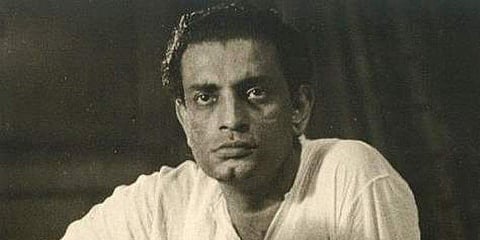
- LIFESTYLE
- FASHION
- FOOD
- ENTERTAINMENT
- EVENTS
- CULTURE
- VIDEOS
- WEB STORIES
- GALLERIES
- GADGETS
- CAR & BIKE
- SOCIETY
- TRAVEL
- NORTH EAST
- INDULGE CONNECT

If you ever visit a quintessential Bengali household, you will, more often than not, come across at least one overstuffed bookshelf. Amid the clutter, along with the Bengali version of Rabindranath Tagore’s Gitanjali, you will definitely find a few books written by Indian writer and filmmaker Satyajit Ray. This Taurean (born on May 2) has long inspired generations of Bengalis with his stories as well as illustrations and calligraphy. “I, like many Bengalis, discovered Ray as a writer first. I discovered him as a filmmaker much later,” said Indrani Majumdar, a member of the Programme Office, India International Centre (IIC), Max Mueller Marg.
Hoping to introduce the sheer vastness of Ray’s genius to Delhi’s population, IIC has been organising a year-long celebration of the birth centenary of Ray since May 2021. Titled ‘Pen, Ink, Action: Ray @100’, this celebration has a number of exhibitions in his honour, along with regular screenings of films directed by Ray.
‘Ray Between the Covers’–it was unveiled at the Art Gallery, Kamaladevi Complex, IIC, on Friday—is the third exhibition of the series. It focuses solely on Ray as a book jacket designer, a sideline he received very little attention for. The exhibition, which will continue till March 1, features digital prints of over 60 book covers that Ray designed for several publishing houses since 1944. This range includes the first cover for Khirer Putul by Abanindranath Tagore, which Ray designed for Signet Press, a Kolkata-based publishing house, as well as covers of his own novels and of other Bengali writers such as Leela Majumdar, Gaganendranath Tagore, and Jibanananda Das, to name a few.
A stunning, visual treat
The gallery, which was spaced with framed images of the covers also had a small reading room for those interested in browsing through Ray’s literary pieces. The room had an assortment of English copies of the Feluda series translated by Bengali fiction translator Gopa Majumdar; Bengali versions of Ray’s novels; and copies of Sandesh, a Bengali children’s magazine started by Ray’s grandfather, Upendrakishore Ray Chowdhury, in 1913.
As a writer and artist, Ray’s genius can be credited to his grandfather as well as his father Sukumar Ray, both stalwarts in the genre of Bengali children’s books. The details and calligraphy seen on the covers are a testament to Ray as an illustrator, who blended traditional art techniques with a quirky style of contemporary art. His innovative streak, however, did not end there; Ray is also credited for designing two distinct typefaces ‘Ray Roman’ and ‘Ray Bizarre’ while working for DJ Keymar—an erstwhile British advertising agency—in 1943.
Both these lettering designs would often surface in the credits of his films. “If you go through the exhibition, the colour palette, the brushstrokes, his thought process; everything is reflected in the covers. It is a visual treat,” mentioned Archana Sharma from Ghaziabad, who we met on the first day. Indu Halder from Noida, who was also at the gallery on Friday, added, “Ray brings alive the name of the books through his designs. The calligraphy seamlessly blends with the image on the jacket.”
Book by the cover
The covers designed by Ray can be rightly labelled as a preamble to the stories in it. The jacket designed by him for his father’s book Pagla Dashu (1940) requires a special mention. In vibrant hues of red and yellow, the cover features the witty and eccentric portrait of the book’s central character Dashu. The antics of this protagonist comes alive, thanks to Ray’s artistic cover. “He plays with the word ‘dozen’ on the covers of his dozen short stories collection with his calligraphy. This play with the title and the cover adds another layer to the book,” mentioned Majumdar.
The show brings out Ray’s work in a completely different light. “I was not aware Ray had done so much with book covers. This exhibition is a revelation to me,” concluded Sharma.